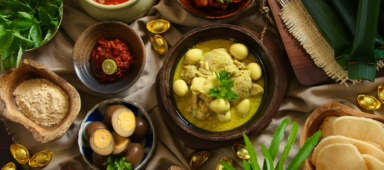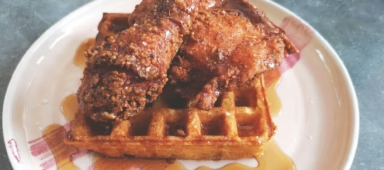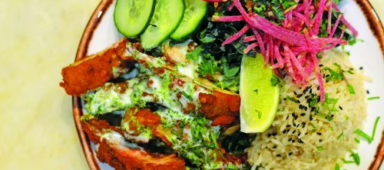Where To Go In Kuala Lumpur To Satisfy Your Ramadhan Cravings

Hungry customers patiently queue at a popiah stall as a man folds spring roll after spicy spring roll. Another vendor grills Malay-style ayam percik – chicken cooked in spices and coconut milk – as smoke and sumptuous smells fill the air. These are common sights in Malaysia during Ramadhan, the ninth month in the Islamic calendar, regarded as the most sacred by observers of Islam around the world. For the whole month, Muslims fast from sunrise to sunset. No food or drink is consumed.
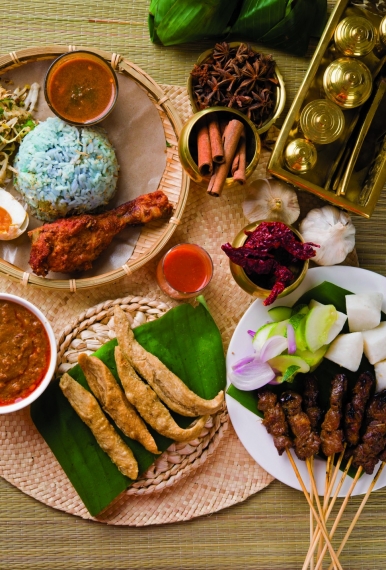
During Ramadhan, two main meals are served: sahur, which is served before dawn, and iftar, which is served after sunset. Although Muslims fast throughout the month, food is in abundance during this time. It can be found in Ramadhan bazaars that spring up in almost every neighbourhood, selling delicacies for buka puasa or the breaking of fast, some of which are not seen at any other time, attracting Muslims and non-Muslims alike. The bazaars are open from 3 pm, ensuring plenty of time for browsing before the breaking of fast at about 7.30 pm. Here are five of the most popular bazaars in and around Kuala Lumpur:
Kampung Baru
Located in one of the capital’s oldest settlements, a Malay enclave that has largely remained almost untouched for over 100 years, just a stone’s throw from the iconic Petronas Twin Towers. You can find stalls selling nasi lemak or rice cooked in coconut milk served with spicy chilli sambal, a variety of Malay-Thai cuisine, murtabak or pancakes stuffed with meat and eggs, and more. A must-try is the legendary bubur lambuk rice porridge cooked with beef, synonymous with the area, and available only during Ramadhan.

Bangsar
In one of KL’s upscale suburbs popular with expatriates, this bazaar is a comparatively small one but still has a wide range of choices that will leave you wanting to eat everything you see. From smoking-hot satay or beef and chicken skewers grilled over flaming coals, to colourful jellies and kuih-muih such as the fragrant putu piring or steamed rice cakes stuffed with palm sugar.
Taman Tun Dr Ismail
Located in an affluent Kuala Lumpur neighbourhood, the mouth-watering varieties at this well-loved bazaar will excite your appetite, from ayam percik to roti john or grilled buns filled with minced meat, egg and chilli sauce. Do try the famed spicy vegetable-filled popiah basah if you are willing to brave the fiery chilli sauce they are doused in, as well as the long queues.
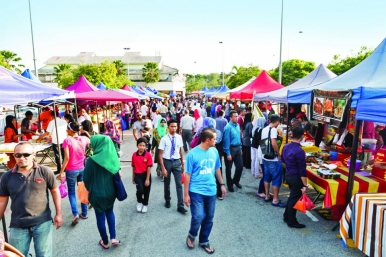
Kelana Jaya
Residents of Selangor state flock to this bazaar for its grilled chicken, ikan bakar or grilled fish, and nasi ambeng (rice eaten with chicken, noodles, and salted fish). Visitors will particularly be seduced by the drinks stalls selling a multitude of juices.
Jalan Masjid India
Located near the Jalan Tuanku Abdul Rahman shopping district, famed for being THE place to go to for traditional Malay attire, this area in the old part of KL city is thronged during Ramadhan by shoppers looking for food and textiles. From colourful silks and satins, to snacks like keropok lekor or fish crackers, to pineapple tarts, and traditional Malay dishes, they can all be found here.
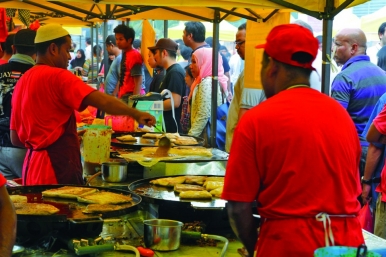
The Real Feast After The Fast
After a month of fasting, Muslims celebrate Eid-al-Fitr, marking the end of Ramadhan. During this time, Malaysians from all walks of life visit friends and family. A vast array of delicacies is served during the festivities, including:
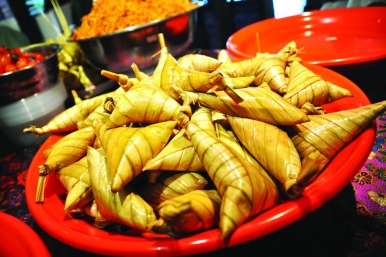
Nasi impit: Compressed cubes of rice, usually served with Malaysia’s beloved dish of satay and dipped in peanut sauce. Nasi impit is also eaten with Eid favourites rendang or lodeh. It can also be served with soto ayam, a hot chicken broth.
Ketupat palas: Glutinous rice cooked with coconut milk wrapped in palm leaves and then boiled, this sticky rice is served with rendang or dry curry, meat floss or other curries and gravies. Sometimes stuffed with red kidney beans, these are tasty enough to be eaten on their own.
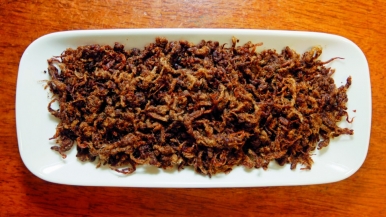
Serunding: Dried meat floss, made with beef, chicken or fish, pan-fried with coconut, chillies and spices, this dish can take up to 90 minutes to cook. Eaten with ketupat, nasi impit, bread, or by itself.
Rendang: One of the country’s national dishes, succulent pieces of beef, mutton, or chicken are cooked for hours over a fire, prepared with coconut milk, kerisik or toasted desiccated coconut, and fresh herbs such as lemongrass and galangal. Rendang is often served at Malay weddings and festivals such as Eid. Eaten with steamed rice, nasi lemak, lemang, ketupat, or nasi impit.
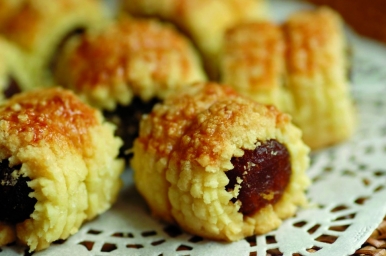
Lodeh: A speciality of southern Johor state, this comforting dish is made of vegetables including cabbage, carrots, tofu, and tempe or fermented soy, cooked in a coconut-based soup. Best eaten with nasi impit, and sometimes with sambal.
Pineapple tarts: Malaysia’s favourite cookie, these bite-sized pastries are enjoyed during many festivities. Made with butter or margarine and flour, these are filled with caramelised pineapple cooked with cinnamon and cloves.
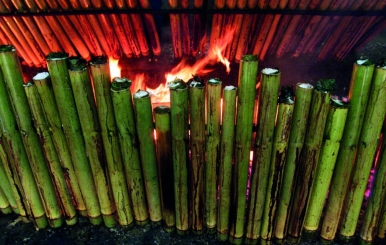
Lemang: An all-time Eid favourite. Glutinous rice cooked with coconut milk inside bamboo lined with banana leaves, this takes about five hours to cook over a fire, resulting in a distinct smoky flavour while remaining moist and creamy on the inside. Best eaten with rendang or curries.

